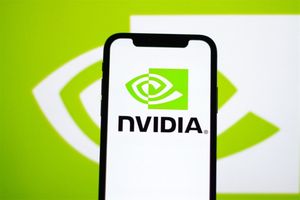
Armonk, NY – October 2, 2025 – IBM (NYSE: IBM) today announced the general availability of Granite 4.0, its latest and most advanced family of open large language models (LLMs), marking a pivotal moment in the evolution of enterprise and open-source AI. This groundbreaking release introduces a novel hybrid Mamba/transformer architecture, meticulously engineered to deliver unparalleled efficiency, drastically reduce hardware costs, and accelerate the adoption of trustworthy AI solutions across industries. With Granite 4.0, IBM is not just offering new models; it's providing a blueprint for more accessible, scalable, and secure AI deployments.
The launch of Granite 4.0 arrives at a critical juncture, as businesses and developers increasingly seek robust yet cost-effective AI capabilities. By combining the linear scalability of Mamba state-space models with the contextual understanding of transformers, IBM aims to democratize access to powerful LLMs, enabling a wider array of organizations to integrate advanced AI into their operations without prohibitive infrastructure investments. This strategic move solidifies IBM's commitment to fostering an open, innovative, and responsible AI ecosystem.
The Dawn of Hybrid Efficiency: Unpacking Granite 4.0's Technical Prowess
At the heart of IBM Granite 4.0's innovation lies its pioneering hybrid Mamba/transformer architecture. Moving beyond the traditional transformer-only designs of its predecessors, Granite 4.0 seamlessly integrates Mamba-2 layers with conventional transformer blocks, typically in a 9:1 ratio. The Mamba-2 component, a state-space model, excels at linearly processing extended sequences, offering superior efficiency for handling very long inputs compared to the quadratically scaling attention mechanisms of pure transformers. These Mamba-2 blocks efficiently capture global context, which is then periodically refined by transformer blocks that provide a more nuanced parsing of local context through self-attention before feeding information back to subsequent Mamba-2 layers. This ingenious combination harnesses the speed and efficiency of Mamba with the precision of transformer-based self-attention.
Further enhancing its efficiency, select Granite 4.0 models incorporate a Mixture-of-Experts (MoE) routing strategy. This allows only the necessary "experts" or parameters to be activated for a given inference request, dramatically reducing computational load. For instance, the Granite 4.0 Small model boasts 32 billion total parameters but activates only 9 billion during inference. Notably, the Granite 4.0 architecture foregoes positional encoding (NoPE), a design choice that IBM's extensive testing indicates has no adverse effect on long-context performance, simplifying the model while maintaining its capabilities.
These architectural advancements translate directly into substantial benefits, particularly in reduced memory requirements and hardware costs. Granite 4.0-H models can achieve over a 70% reduction in RAM usage for tasks involving long inputs and multiple concurrent batches compared to conventional transformer models. This efficiency is critical for enterprises dealing with extensive context or needing to batch infer several model instances simultaneously. The dramatic decrease in memory demands directly correlates to a similar reduction in the cost of hardware, allowing enterprises to deploy Granite 4.0 on significantly cheaper GPUs, leading to substantial savings in infrastructure and faster performance. This lowers the barrier to entry, making powerful LLMs more accessible for both enterprises and open-source developers.
Initial reactions from the AI research community and industry experts have been largely positive, highlighting the potential for this hybrid approach to solve long-standing challenges in LLM deployment. Experts commend IBM for pushing the boundaries of architectural design, particularly in addressing the computational overhead often associated with high-performance models. The focus on efficiency without sacrificing performance is seen as a crucial step towards broader AI adoption, especially in resource-constrained environments or for edge deployments.
Reshaping the AI Landscape: Implications for Companies and Competitive Dynamics
The launch of IBM Granite 4.0 is set to significantly reshape the competitive landscape for AI companies, tech giants, and startups alike. Companies like IBM, which champion open-source and enterprise-grade AI, stand to benefit immensely. Enterprises, particularly those in highly regulated industries or with stringent cost controls, are the primary beneficiaries. The reduced memory footprint and hardware requirements mean that more organizations can deploy powerful LLMs on existing infrastructure or with significantly lower new investments, accelerating their AI initiatives. This is particularly advantageous for small to medium-sized businesses and startups that previously found the computational demands of state-of-the-art LLMs prohibitive.
For major AI labs and tech companies, Granite 4.0 introduces a new competitive benchmark. While companies like Google (NASDAQ: GOOGL), Microsoft (NASDAQ: MSFT), and Amazon (NASDAQ: AMZN) continue to develop proprietary models, IBM's open-source, efficient, and certified approach presents a compelling alternative. The Apache 2.0 license and ISO 42001 certification for Granite 4.0 models could attract a vast developer community and enterprise users who prioritize transparency, governance, and cost-effectiveness. This might compel other major players to either open-source more of their advanced models or focus more heavily on efficiency and governance in their proprietary offerings.
Potential disruption to existing products or services could be seen in the cloud AI market, where the ability to run powerful models on less expensive hardware reduces reliance on high-end, costly GPU instances. This could shift demand towards more cost-optimized cloud solutions or even encourage greater on-premise or edge deployments. Furthermore, companies specializing in AI infrastructure optimization or those offering smaller, more efficient models might face increased competition from IBM's highly optimized and broadly available Granite 4.0 family.
IBM's market positioning is significantly strengthened by Granite 4.0. By providing enterprise-ready, trustworthy, and cost-efficient open models, IBM differentiates itself as a leader in practical, responsible AI. The strategic advantages include fostering a larger developer ecosystem around its models, deepening its relationships with enterprise clients by addressing their core concerns of cost and governance, and potentially setting new industry standards for open-source LLM development and deployment. This move positions IBM as a crucial enabler for widespread AI adoption, moving beyond just theoretical advancements to tangible, business-centric solutions.
Wider Significance: Trust, Transparency, and the Open AI Horizon
IBM Granite 4.0's launch transcends mere technical specifications; it represents a significant stride in the broader AI landscape, emphasizing trust, transparency, and accessibility. Its release under the permissive Apache 2.0 license is a clear signal of IBM's commitment to the open-source community, enabling broad commercial and non-commercial use, modification, and redistribution. This move fosters a collaborative environment, allowing developers worldwide to build upon and improve these foundational models, accelerating innovation at an unprecedented pace.
A standout feature is Granite 4.0's distinction as the world's first open models to receive ISO 42001 certification, an international standard for AI governance, accountability, and transparency. This certification is a game-changer for enterprise adoption, particularly in regulated sectors, providing a crucial layer of assurance regarding the models' ethical development and operational integrity. Alongside cryptographic signing of all model checkpoints, which ensures provenance and authenticity, IBM is setting a new bar for security and trustworthiness in open AI. These measures directly address growing concerns about AI safety, bias, and explainability, making Granite 4.0 a more palatable option for risk-averse organizations.
The widespread availability of Granite 4.0 models across popular platforms like Hugging Face, Docker Hub, Kaggle, NVIDIA (NASDAQ: NVDA) NIM, Ollama, LM Studio, Replicate, and Dell (NYSE: DELL) Pro AI Studio, with planned access through Amazon SageMaker JumpStart and Microsoft Azure AI Foundry, ensures maximum reach and integration potential. This broad distribution strategy is vital for fostering experimentation and integration within the global developer community, contrasting with more closed or proprietary AI development approaches. The earlier preview release of Granite 4.0 Tiny in May 2025 also demonstrated IBM's commitment to developer accessibility, allowing those with limited GPU resources to engage with the technology early on.
This launch can be compared to previous AI milestones that emphasized democratizing access, such as the initial releases of foundational open-source libraries or early pre-trained models. However, Granite 4.0 distinguishes itself by combining cutting-edge architectural innovation with a robust framework for governance and trustworthiness, addressing the full spectrum of challenges in deploying AI at scale. Its impact extends beyond technical performance, influencing policy discussions around AI regulation and ethical development, and solidifying the trend towards more responsible AI practices.
The Road Ahead: Envisioning Future Developments and Applications
The introduction of IBM Granite 4.0 paves the way for a wave of near-term and long-term developments across the AI spectrum. In the immediate future, we can expect to see rapid integration of these models into existing enterprise AI solutions, particularly for tasks requiring high efficiency and long-context understanding. The optimized 3B and 7B models are poised for widespread adoption in edge computing environments and local deployments, with the Granite-4.0-Micro model even demonstrating the capability to run entirely in a web browser using WebGPU, opening up new avenues for client-side AI applications.
Potential applications and use cases on the horizon are vast and varied. Enterprises will leverage Granite 4.0 for enhanced agentic workflows, improving summarization, text classification, data extraction, and complex question-answering systems. Its superior instruction following and tool-calling capabilities make it ideal for sophisticated Retrieval Augmented Generation (RAG) systems, code generation, and multilingual dialogues across the 12+ supported languages. The tailored training for enterprise tasks, including cybersecurity applications, suggests a future where these models become integral to automated threat detection and response systems. We can also anticipate further fine-tuning by the community for niche applications, given its open-source nature.
However, challenges still need to be addressed. While the hybrid architecture significantly reduces memory and hardware costs, optimizing these models for even greater efficiency and adapting them to a broader range of specialized hardware will be an ongoing endeavor. Ensuring the continued integrity and ethical use of these powerful open models, despite their certifications, will also require sustained effort from both IBM and the broader AI community. Managing potential biases and ensuring robust safety guardrails as the models are deployed in diverse contexts remains a critical area of focus.
Experts predict that Granite 4.0's hybrid approach could inspire a new generation of LLM architectures, prompting other researchers and companies to explore similar efficiency-driven designs. This could lead to a broader shift in how foundational models are developed and deployed, prioritizing practical scalability and responsible governance alongside raw performance. The emphasis on enterprise-readiness and open access suggests a future where high-quality AI is not a luxury but a standard component of business operations.
A New Chapter in AI History: Wrapping Up Granite 4.0's Significance
IBM Granite 4.0 represents a significant milestone in AI history, not just as another iteration of large language models, but as a paradigm shift towards hyper-efficient, trustworthy, and openly accessible AI. The key takeaways from this launch include the groundbreaking hybrid Mamba/transformer architecture, which dramatically reduces memory and hardware costs, making powerful LLMs more accessible. Its ISO 42001 certification and cryptographic signing establish new benchmarks for trust and transparency in open-source AI, directly addressing critical enterprise concerns around governance and security.
This development's significance lies in its potential to accelerate the democratization of advanced AI. By lowering the barrier to entry for both enterprises and individual developers, IBM is fostering a more inclusive AI ecosystem where innovation is less constrained by computational resources. Granite 4.0 is not merely about pushing the performance envelope; it's about making that performance practically achievable and responsibly governed for a wider audience. Its design philosophy underscores a growing industry trend towards practical, deployable AI solutions that balance cutting-edge capabilities with real-world operational needs.
Looking ahead, the long-term impact of Granite 4.0 could be profound, influencing how future LLMs are designed, trained, and deployed. It may catalyze further research into hybrid architectures and efficiency optimizations, leading to even more sustainable and scalable AI. What to watch for in the coming weeks and months includes the rate of adoption within the open-source community, the specific enterprise use cases that emerge as most impactful, and how competitors respond to IBM's bold move in the open and enterprise AI space. The success of Granite 4.0 will be a strong indicator of the industry's readiness to embrace a future where powerful AI is not only intelligent but also inherently efficient, transparent, and trustworthy.
This content is intended for informational purposes only and represents analysis of current AI developments.
TokenRing AI delivers enterprise-grade solutions for multi-agent AI workflow orchestration, AI-powered development tools, and seamless remote collaboration platforms.
For more information, visit https://www.tokenring.ai/.





